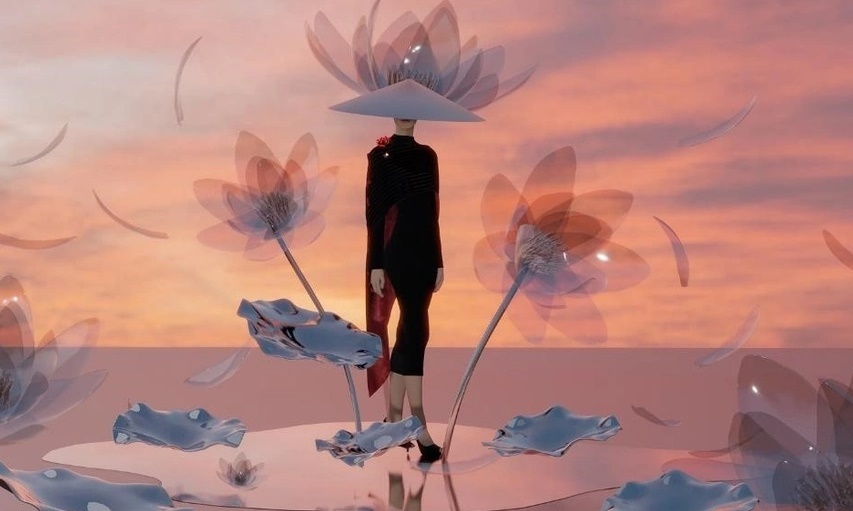3D fashion hitting Vietnam’s tech space
Le Thanh Hoa, a Vietnamese fashion designer, put this idea firmly into practice on October 27 with the launch of his new collection called An. Instead of working solely with traditional models, Hoa decided to create a 3D space, including its own programmed models, to showcase some of his designs.
 |
| 3D fashion hitting Vietnam’s tech space, source: zingnews.vn |
Such virtual performance spaces profit from advances in 3D gaming and film technology, showcasing models and designs with vivid designs, colours, and textures.
Hoa said that the experience with digital fashion is his way to encourage young people in the creative field. “The need to create a personal mark in the digital age has given birth to many technology products, and fashion is no exception. I feel excited to try new things,” said Hoa.
Hoa is the first Vietnamese designer to apply 3D technology to a fashion exhibition, but he is not the first to have the idea of using technology to promote and develop fashion products.
Late last year, BOO, a well-known domestic fashion brand in Vietnam with products using environmentally friendly materials, cooperated with British tech startup VerseHub to digitalise some of its fashion products on a blockchain platform.
According to COO Do Viet Anh, this is the brand’s way to help customers have a new shopping experience in NextVerse, its own virtual reality platform, and take advantage of today’s hottest trends to promote products. “The project is experimental, showing that BOO dares to do and to be different,” said Anh.
The application of new technologies such as blockchain, AI, and 3D printing has become popular in the world’s fashion industry. Although applied through different forms at each brand, technology is gradually promoting its advantages in helping brands come up with appropriate development directions.
Many big brands have chosen to apply technology to shorten production time and costs, and offer customers a better shopping experience.
In September, Nike put a robot named BILL to the test at a retail store in London. BILL, which stands for bot-initiated longevity lab, will help customers clean old shoes and repair damaged parts through a special scanner system. The bot is expected to help Nike connect better with customers, paving the way for the company’s plan to develop personalised services and communicate the recycled product line that is becoming a trend in the fashion industry.
Meanwhile, Adidas has been working with a 3D printing and design company to launch a running shoe using Futurecraft 4D technology. The tech contributes to improving the user’s ability to move forward three times faster, compared to the previous technology.
These changes could help local fashion brands compete with the rapid transformation of global behemoths like Topshop, with the ability to launch about 500 styles per week, or Zara, with a production rate of 20,000 styles per year.
What the stars mean:
★ Poor ★ ★ Promising ★★★ Good ★★★★ Very good ★★★★★ Exceptional
Related Contents
Latest News
More News
- GBA Oktoberfest 2025 celebrates German-Vietnam ties (September 29, 2025 | 23:52)
- Showcase AC 2025 set to light up Hanoi stage (September 12, 2025 | 18:06)
- GBA Oktoberfest Vietnam returns with landmark edition (September 07, 2025 | 11:52)
- New Zealand art exhibition to strengthen Vietnam cultural links (August 16, 2025 | 12:16)
- LG art exhibition marks three decades of development in Vietnam (July 31, 2025 | 14:38)
- Maxilite by Dulux launches national contest for painters (July 28, 2025 | 12:16)
- Runners gear up as Sedona SkyRun makes a comeback (June 30, 2025 | 17:28)
- Innovative concert brings symphonic music closer to Vietnamese audience (June 24, 2025 | 09:39)
- Panasonic kicks off Kid Witness News 2025 to enrich children’s summer (June 12, 2025 | 18:25)
- Danang dances in the fireworks limelight (June 09, 2025 | 11:00)

 Tag:
Tag:





















 Mobile Version
Mobile Version